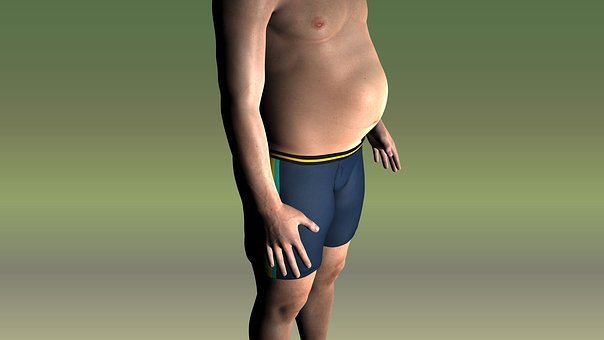Sudden Cardiac Arrest in Young Tied to Obesity

Sudden cardiac death in younger patients may be more highly correlated with obesity than is exertion during sports, a new study suggests.
Among 5- to 34-year-olds in Portland, Oregon, who had an out-of-hospital sudden cardiac arrest (SCA), 39% were obese, but only 14% were participating in sports activities at the time of the cardiac arrest.
"To our knowledge, this study is the first to evaluate the association of traditional cardiovascular risk factors in young SCA from a single large US community, over multiple years," Reshmy Jayaraman, MD, Cedars-Sinai Medical Center, Los Angeles, California, and colleagues conclude in their article, published in Circulation.
About three in five of these young individuals already had one or more classic cardiovascular risk factors, including diabetes, hypertension, obesity, hyperlipidemia, and smoking, a rate higher than anticipated.
"These findings suggest that if you address these very well-established cardiovascular risk factors at a young age, you could even possibly prevent sudden cardiac arrest at a younger age," senior author, Sumeet S Chugh, MD, Cedars-Sinai Medical Center, Los Angeles, California, told theheart.org | Medscape Cardiology.
The study also showed that sports-related sudden cardiac arrests made up less than 15% of all such events, and when there was a cardiac arrest during sports, individuals were far more likely to survive because the event was typically witnessed, Chugh said.

On the other hand, it's not clear why just 40% of kids on the sports field got bystander cardiopulmonary resuscitation (CPR), he said. "It should be 100%."
"The fact that one third of the obese patients who suffered from sudden cardiac arrest had coronary artery disease as the presumed etiology indicates that there is room for intervention here," Anne B Curtis, MD, University at Buffalo, New York, who was not involved with the study, told theheart.org | Medscape Cardiology.
"We need to redouble efforts to combat the obesity epidemic as well as to treat the complications related to it."
Like Chugh, she noted that "the relatively low incidence of bystander CPR in witnessed cardiac arrests indicates that there is still a great deal of public education and training necessary in this area as well."
Risk Factors, Warning Signs, Sports as a Trigger
It is known that young people with cardiovascular risk factors, such as obesity and hypertension, are at increased risk for morbidity and mortality when they are older, the researchers write. But it was not clear if children and youth who had a sudden cardiac arrest might have these cardiovascular risk factors, if they had warning signs, or if sports were a trigger.
To investigate this, they identified all cases of sudden cardiac arrest during 2002 to 2015 in the Portland metropolitan area of about 1 million people, using data from the Oregon Sudden Unexpected Death Study. They excluded noncardiac deaths, such as those from drug overdoses.
Of 3775 cardiac arrests, 186 (5%) occurred in individuals who were aged 5 to 34 years. Of these cardiac arrests in young people, 26 cases (14%) were associated with sports as a trigger.
Sudden cardiac arrest occurred during or within an hour of participating in a sport in 39% of the youngest individuals (up to age 18 years), but this was true for only 13% of 19- to 24-year-olds and 7% of 25- to 34-year-olds.

The sports ranged from gym, running, cycling, basketball, and skiing (two to four sudden cardiac arrests each) to baseball, football, hiking, horseback riding, rock climbing, and swimming (one cardiac arrest each).
Bystander CPR was performed in 42% of sports-related cases and 32% of non–sports-related cases (P = .37), but the individuals who had a sudden cardiac arrest in a sports setting were more likely to be resuscitated and survive until hospital discharge (28% vs 11%; P = .05).
"In this young population, there was a relatively high prevalence of diabetes (9%), hypertension (15%), and history of smoking (25%)," the researchers note; 22% were overweight (body mass index, 25 to 29.9 kg/m2) and 40% were obese.
Overall, the most common presumed cause was sudden arrhythmic death syndrome (31%), coronary artery disease (22%), and hypertrophic cardiomyopathy (14%).
Only 29% of the individuals had prior symptoms, such as angina, palpitations, and dizziness (33% in sports-related cases vs 28% in the non–sports-related cases; P = .61).
The relatively low proportion of individuals with warning signs "is a disturbing finding, especially when compared to middle-aged subjects, where at least 50% of the patients experience warning signs before cardiac arrest," Jayaraman and colleagues note.
"We've got a lot more work to do" to help identify risk for sudden cardiac arrest in a younger population, Chugh said.
In the meantime, "this study highlights the importance of prevention efforts that extend beyond pre-participation athletic screening and could be applied to routine preventive visits for children and young adults," the researchers conclude.
"Screening and management of conventional cardiovascular risk factors such as smoking, obesity, hypertension and hyperlipidemia could have a significant beneficial impact on SCA in the young."
The study was partly funded by a National Institutes of Health, National Heart, Lung, and Blood Institute grant to Chugh, who also holds the Pauline and Harold Price Chair in Cardiac Electrophysiology at Cedars-Sinai, Los Angeles. The authors have disclosed no relevant financial relationships.